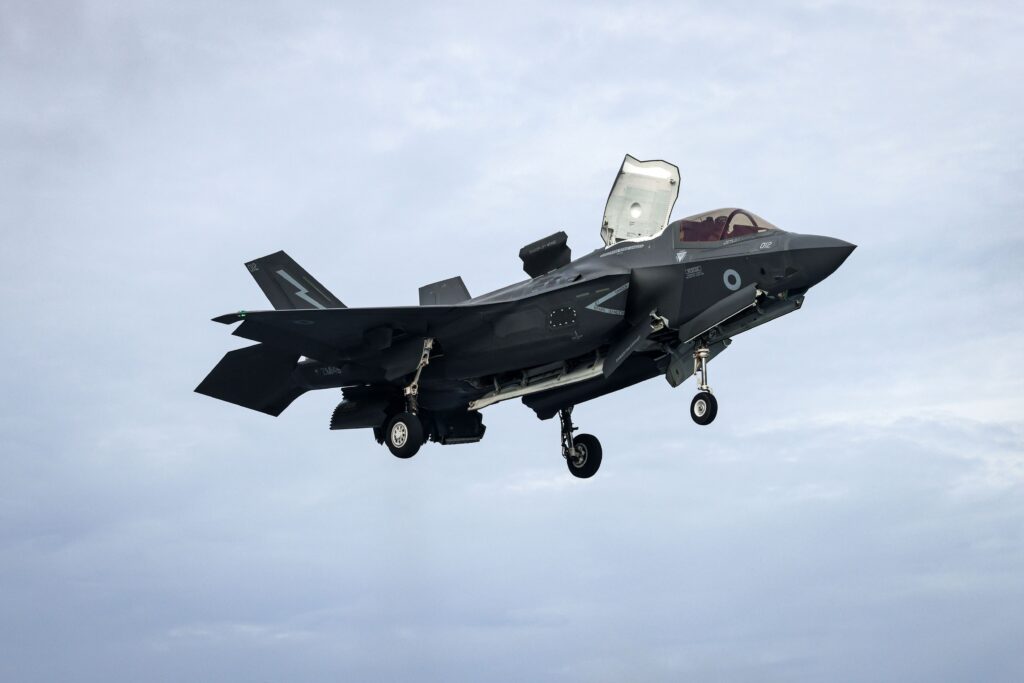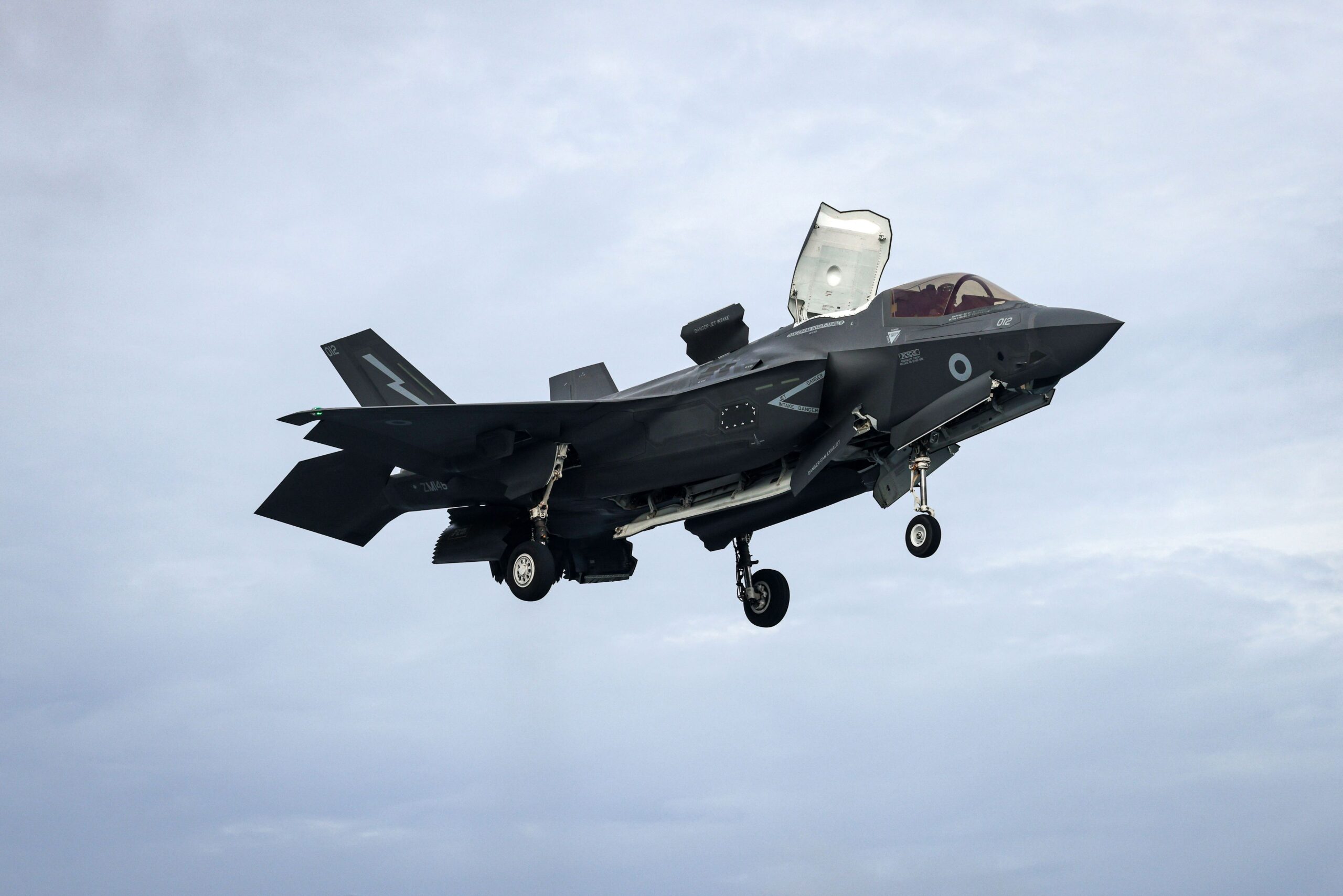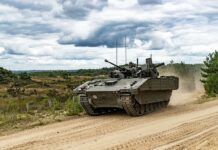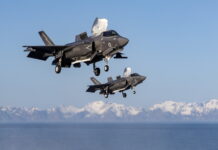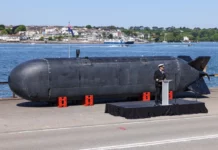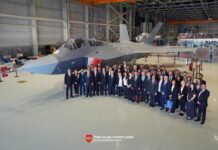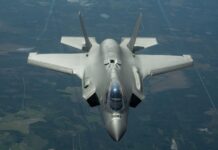While the UK’s F-35B Lightning Joint Strike Fighters are “significantly superior to any previous UK aircraft”, the UK government’s National Audit Office (NAO) has taken the UK Ministry of Defence (MoD) to task over a number of shortfalls in the F-35 programme in relation to capability, delivery, availability and costs.
Publishing a report on the UK F-35 fleet on 11 July 2026, the NAO noted most prominently that the aircraft does not yet have a stand-off air-to-ground weapon and is unlikely to receive one – in the form of the MBDA SPEAR 3 missile –until the early 2030s, while integration of the Meteor beyond-visual-range air-to-air missile is in a similar position.
“The original need-by date for the SPEAR 3 air-to-surface and Meteor air-to-air missiles was December 2024,” the NAO stated. “However, the MoD now expects to have both in full service in the early 2030s. These delays have been caused by poor supplier performance, the MoD negotiating commercial arrangements that failed to prioritise delivery and low priority given to Meteor by the global programme.”
The NAO also pointed out that the UK will not have a sovereign facility to assure that its F-35s retain their stealth characteristics until the 2030s, much later than originally planned, and that hardware and software updates under the global F-35 programme’s Block 4 upgrade have been delayed.
In terms of deliveries, the NAO noted that in 2016 the UK MoD originally announced that it would buy 48 F-35s by the end of 2024, yet as of June 2025 the Royal Air Force and Royal Navy are only operating 37 F-35Bs from 38 delivered after one was lost in an accident in November 2021.
The MoD now forecasts that it will have 41 aircraft by the end of 2025 and receive its 48th aircraft at the end of April 2026. Meanwhile, on 25 June the Royal Air Force (RAF) announced that, as part of second-phase procurement plans to buy 27 more aircraft, the UK would buy 12 F-35A conventional take-off and landing (CTOL) variants as well as 15 more short take-off/vertical landing (STOVL) F-35Bs. The UK government announced that the F-35As would be used to contribute to NATO’s Dual-Capable Aircraft (DCA) nuclear mission, although the RAF noted that, on a day-to-day basis, the F-35As would be used in a training role on 207 Squadron: the F-35 Operational Conversion Unit.
The NAO report points out that the UK MoD now expects to declare a full operating capability (FOC) with the F-35 by the end of 2025, which is two years later than what was planned in 2018.
In terms of the UK F-35 programme of record, the NAO states that the MoD “has publicly committed to acquiring 138 aircraft, giving it a prominent position in the global programme, although slow progress towards this target risks undermining that position”. However, multiple UK military aerospace analysts with whom ESD has consulted are highly sceptical as to whether this figure will ever be achieved.
The NAO also detailed shortfalls in F-35 availability, pointing out that that MoD “has not been able to sustainably deliver its targets for aircraft availability, resulting in flying hours that were below its requirements for pilots”. In 2024, sated the NAO, “the UK F-35 fleet had a mission-capable rate (defined as the ability of an aircraft to perform at least one of its seven possible required missions) that was approximately half of the MoD’s target, with a full mission-capable rate (defined as the ability of an F-35 aircraft to perform all its required missions) that was around a third of the MoD’s target.
“The poor availability rates are driven largely by a UK shortage of F-35 engineers and a global shortage of F-35 spare parts,” the NAO stated, adding that “comparable figures for the period between October 2024 and January 2025 also showed that UK rates were significantly lower than those of the global F-35B fleet”. While the NAO noted that the MoD improved these metrics in April 2025 for the UK’s Carrier Strike Group 2025 deployment, meeting its target for mission-capable rates and almost meeting its target for full-mission capable rates, the watchdog cautioned that “these rates are unlikely to prove sustainable after the deployment”.
The NAO cited “major personnel shortages across a range of roles” and a need to further improve F-35 infrastructure” as factors that are causing a drag on UK F-35 capabilities. Notably, the watchdog cited a delay to the UK’s Aircraft Signature Assessment Facility, which assures the UK F-35 fleet’s stealth characteristics. “This was originally delayed for affordability reasons and will now not be delivered until the 2030s, albeit with partial mitigations planned,” said the NAO.
In relation to costs, the NAO stated, “We estimate that the MoD has spent GBP 11 billion [EUR 12.7 billion] to date on F-35 capability, which is more than it has reported, and more than it anticipated it would spend at the time of the 2013 business case.”
The UK F-35 programme’s whole-life costs, meanwhile, are considerably higher than the MoD has publicly reported, the NAO pointed out.
“The programme’s public forecast of whole-life costs of GBP 18.76 billion assumes only 48 aircraft will be procured and that their out-of-service date will be 2048, even though MoD policy is to procure 138 aircraft and take them out of service in 2069,” the NAO stated. “Following National Audit Office prompting, the MoD has forecast that the cost of 138 aircraft to an out-of-service date of 2069 would be just under GBP 57 billion, although it describes this forecast as pessimistic and notes that it has not been subject to independent validation. This figure does not include non-equipment costs, such as personnel, fuel, and much infrastructure. We estimate these costs would add GBP 14 billion to the MoD’s estimate, making a full whole-life cost of GBP 71 billion.”
In announcing that it would procure a dozen F-35As, the MoD was quick to assert that these aircraft would “deliver a saving of up to 25% per aircraft for the taxpayer” compared to buying and operating F-35Bs. Although the MoD announced that the F-35A procurement was ostensibly to support NATO’s DCA nuclear mission, given that the bomb bay of the UK’s current F-35Bs cannot accommodate the US-produced B61-12 freefall nuclear bomb, many observers are in reality seeing the F-35A procurement as effectively a cost-cutting measure.
In concluding its report, the NAO made a number of recommendations for the MoD to seek maximum through-life value out of the F-35. These included developing, maintaining and updating an assessment of the value it intends to deliver throughout the life of the UK F-35 programme; a more stringent calculation of costs associated with the programme; consideration of structural changes to support more effective F-35 programme delivery; and a tightening of how the MoD measures F-35 capability.
